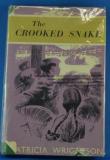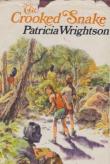AustLit
The material on this page is available to AustLit subscribers. If you are a subscriber or are from a subscribing organisation, please log in to gain full access. To explore options for subscribing to this unique teaching, research, and publishing resource for Australian culture and storytelling, please contact us or find out more.
Latest Issues
AbstractHistoryArchive Description
A group of children set up a club to pursue their favourite project: keeping vandals out of the nearby national park.
Notes
-
Also published in braille and sound recording formats.
Publication Details of Only Known VersionEarliest 2 Known Versions of
Other Formats
- Also braille and sound recording.
Works about this Work
-
Relationships to the Bush in Nan Chauncy’s Early Novels for Children
2014
single work
criticism
— Appears in: JASAL , vol. 14 no. 3 2014; 'In the 1950s, bush settings were strong favourites for children’s novels, which often took the form of a generic mix of adventure story and bildungsroman, novel of individual development. In using bush settings to take up the environmental concerns of the period, the early novels of Wrightson and Chauncy added a new dimension to traditional settler images of rural life as central to Australian national identity. The bush is loved for its beauty and revered as a source of knowledge and character building, rather than being represented as an antagonist which must be overcome or domesticated. In this respect, Chauncy in particular anticipates later ecological concerns in writing for children.' (Publication abstract) -
Anna Beth McCormack : Hartnett, Jinks and Honey
2010
single work
column
— Appears in: The Lu Rees Archives Notes, Books and Authors , no. 32 2010; (p. 19) -
Patricia Wrightson : At the Edge of Australian Vision
1981
single work
criticism
biography
— Appears in: Innocence and Experience : Essays on Contemporary Australian Children's Writers 1981; (p. 99-130)
-
Anna Beth McCormack : Hartnett, Jinks and Honey
2010
single work
column
— Appears in: The Lu Rees Archives Notes, Books and Authors , no. 32 2010; (p. 19) -
Patricia Wrightson : At the Edge of Australian Vision
1981
single work
criticism
biography
— Appears in: Innocence and Experience : Essays on Contemporary Australian Children's Writers 1981; (p. 99-130) -
Relationships to the Bush in Nan Chauncy’s Early Novels for Children
2014
single work
criticism
— Appears in: JASAL , vol. 14 no. 3 2014; 'In the 1950s, bush settings were strong favourites for children’s novels, which often took the form of a generic mix of adventure story and bildungsroman, novel of individual development. In using bush settings to take up the environmental concerns of the period, the early novels of Wrightson and Chauncy added a new dimension to traditional settler images of rural life as central to Australian national identity. The bush is loved for its beauty and revered as a source of knowledge and character building, rather than being represented as an antagonist which must be overcome or domesticated. In this respect, Chauncy in particular anticipates later ecological concerns in writing for children.' (Publication abstract)
Awards
Last amended 27 May 2014 11:03:30
Settings:
- 1950s
Export this record





